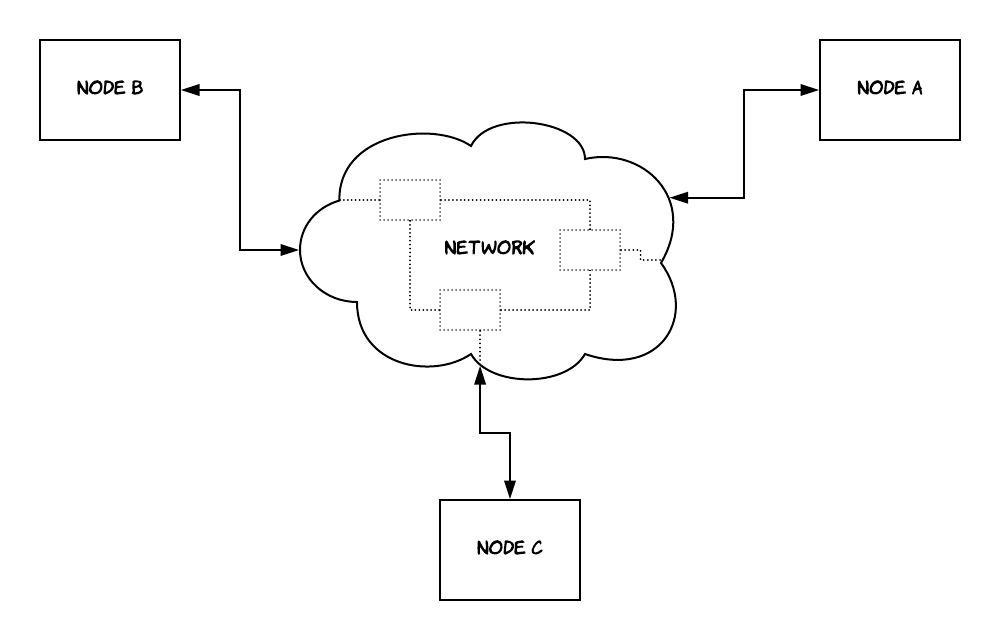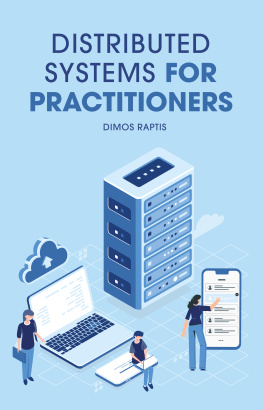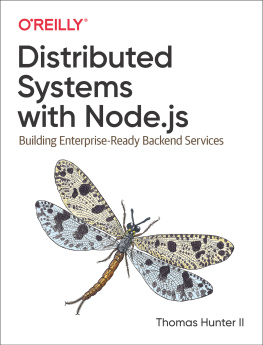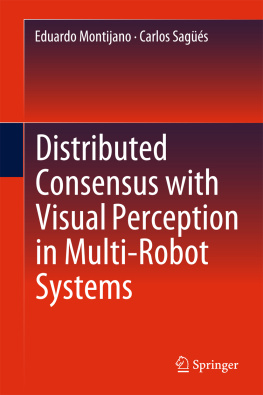Dimos Raptis - Distributed Systems for practitioners
Here you can read online Dimos Raptis - Distributed Systems for practitioners full text of the book (entire story) in english for free. Download pdf and epub, get meaning, cover and reviews about this ebook. year: 2020, genre: Computer. Description of the work, (preface) as well as reviews are available. Best literature library LitArk.com created for fans of good reading and offers a wide selection of genres:
Romance novel
Science fiction
Adventure
Detective
Science
History
Home and family
Prose
Art
Politics
Computer
Non-fiction
Religion
Business
Children
Humor
Choose a favorite category and find really read worthwhile books. Enjoy immersion in the world of imagination, feel the emotions of the characters or learn something new for yourself, make an fascinating discovery.
- Book:Distributed Systems for practitioners
- Author:
- Genre:
- Year:2020
- Rating:4 / 5
- Favourites:Add to favourites
- Your mark:
- 80
- 1
- 2
- 3
- 4
- 5
Distributed Systems for practitioners: summary, description and annotation
We offer to read an annotation, description, summary or preface (depends on what the author of the book "Distributed Systems for practitioners" wrote himself). If you haven't found the necessary information about the book — write in the comments, we will try to find it.
Distributed Systems for practitioners — read online for free the complete book (whole text) full work
Below is the text of the book, divided by pages. System saving the place of the last page read, allows you to conveniently read the book "Distributed Systems for practitioners" online for free, without having to search again every time where you left off. Put a bookmark, and you can go to the page where you finished reading at any time.
Font size:
Interval:
Bookmark:

Dimos Raptis
Distributed systems are becoming ubiquitous in our life nowadays: from how we communicate with our friends to how we make online shopping and many more things. It might be transparent to us sometimes, but many companies are making use of extremely complicated software systems under the hood to satisfy our needs. By using these kind of systems, companies are capable of significant achievements, such as sending our message to a friend who is thousand miles away in a matter of milliseconds, delivering our orders despite outages of whole datacenters or searching the whole Internet by processing more than a million terabytes of data in less than a second. Putting all of this into perspective, it's easy to understand the value that distributed systems bring in the current world and why it's useful for software engineers to be able to understand and make use of distributed systems.
However, as easy and fascinating as it might seem, the area of distributed systems is a rather complicated one with many different execution models and failure modes. As a result, in order for one to simply understand how to use a 3rd party library or verify the correctness of a distributed system under construction, one has to digest a vast amount of information first. Distributed systems have been a really hot academic topic for the last decades and tremendous progress has been achieved, albeit through a large number of papers with one building on top of the previous ones usually. This sets a rather high barrier to entry for newcomers and practitioners that just want to understand the basic building blocks, so that they can be confident in the systems they are building without any aspirations of inventing new algorithms or protocols.
The ultimate goal of this book is to help these people get started with distributed systems in an easy and intuitive way. It was born out of my initiation to the topic, which included a lot of transitions between excitement, confusion and enlightenment.
Of course, it would be infeasible to tackle all the existing problems in the space of distributed computing. So, this book will focus on:
- establishing the basic principles around distributed systems
- explaining what is and what is not possible to achieve
- explaining the basic algorithms and protocols, by giving easy-to-follow examples and diagrams
- explaining the thinking behind some design decisions
- expanding on how these can be used in practice and what are some of the issues that might arise when doing so
- eliminating confusion around some terms (i.e. consistency) and foster thinking about trade-offs when designing distributed systems
- providing plenty of additional resources for people that are willing to invest more time in order to get a deeper understanding of the theoretical parts
This book is aimed at software engineers that have some experience in building software systems and have no or some experience in distributed systems. We assume no knowledge around concepts and algorithms for distributed systems. This book attempts to gradually introduce the terms and explain the basic algorithms in the simplest way possible, providing many diagrams and examples. As a result, this book can also be useful to people that don't develop software, but want to get an introduction to the field of distributed systems. However, this book does not aim to provide a full analysis or proof of every single algorithm. Instead, the book aims to help the reader get the intuition behind a concept or an algorithm, while also providing the necessary references to the original papers, so that the reader can study other parts of interest in more depth.
As any other book, this book might have been written by a single person, but that would not have been possible without the contribution of many others. As a result, credits should be given to all my previous employers and colleagues that have given me the opportunity to work with large-scale, distributed systems and appreciate both their capabilities and complexities and the distributed systems community that was always open to answer any questions. I would also like to thank Richard Gendal Brown for reviewing the case study on Corda and giving feedback that was very useful in helping me to add clarity and remove ambiguity. Of course, this book would not have been possible without the understanding and support of my partner in life, Maria.
First of all, we need to define what a distributed system is. Multiple, different definitions can be found, but we will use the following:
"A distributed system is a system whose components are located on different networked computers, which communicate and coordinate their actions by passing messages to one another." []
As shown in Figure , this network can either consist of direct connections between the components of the distributed system or there could be more components that form the backbone of the network (if communication is done through the Internet for example). These components can take many forms; they could be servers, routers, web browsers or even mobile devices. In an effort to keep an abstract and generic view, in the context of this book we'll refer to them as nodes, being agnostic to their real form. In some cases, such as when providing a concrete example, it might be useful to escape this generic view and see how things work in real-life. In these cases, we might explain in detail the role of each node in the system.

Figure 1: A distributed system
As we will see later, the 2 parts that were highlighted in the definition above are central to how distributed systems function:
- the various parts that compose a distributed system are located remotely, separated by a network.
- the main mechanism of communication between them is by exchanging messages, using this network that separates them.
Now that we have defined what a distributed system is, let's explore its value.
Why do we really need distributed systems ?
Looking at all the complexity that distributed systems introduce, as we will see during this book, that's a valid question. The main benefits of distributed systems come mostly in the following 3 areas:
- performance
- scalability
- availability
Let's explain each one separately. The performance of a single computer has certain limits imposed by physical constraints on the hardware. Not only that, but after a point, improving the hardware of a single computer in order to achieve better performance becomes extremely expensive. As a result, one can achieve the same performance with 2 or more low-spec computers as with a single, high-end computer. So, distributed systems allow us to achieve better performance at a lower cost. Note that better performance can translate to different things depending on the context, such as lower latency per request, higher throughput etc.
Font size:
Interval:
Bookmark:
Similar books «Distributed Systems for practitioners»
Look at similar books to Distributed Systems for practitioners. We have selected literature similar in name and meaning in the hope of providing readers with more options to find new, interesting, not yet read works.
Discussion, reviews of the book Distributed Systems for practitioners and just readers' own opinions. Leave your comments, write what you think about the work, its meaning or the main characters. Specify what exactly you liked and what you didn't like, and why you think so.










